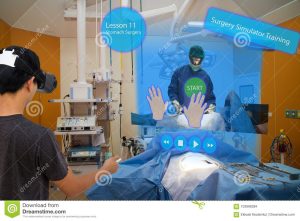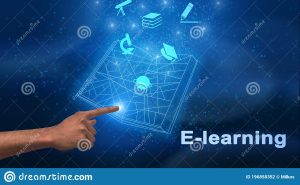Books today can still come in traditional formats but at the expense of the dwindling publications that exist. Post-modern publications are phasing out. Some artists still make print, and with the push towards eco-friendly alternatives, digital publications are here to stay. Like how Jessica Pressman writes in “The Aesthetic of Bookishness in Twenty-First Century Literature” she states a great understanding, “The book will not become obsolete with new reading platforms, but rather, will change and develop new incarnations and readerships.” The idea isn’t to eradicate print but to make new knowledge accessible. In the past thirty years, we as a society have digitized 70% of modern publications, and all new publications are made purely for e-readers or made available on the web. Libraries haven’t changed much since 2020, however, the buildings are now full of computers. Libraries still carry prints that haven’t been digitized and analog content is still cherished, but with all new publications being digital, libraries resemble offices stacked upon one another. Digital e-readers are more popularly rented out and content is downloaded from the library itself. AR rooms in libraries are provided for presentations as commonly as they are in the office and classrooms.
Libraries of the Future
 Photo by Marcus Loke on Unsplash
Photo by Marcus Loke on Unsplash
Books still exist, but with a focus on accessibility, we begin to deepen our understanding of books with an immersive relationship. In Amaranth Borsuk’s “The Book,” she talks about Socrates’ fears of sharing ideology through literature when she writes “Their concerns echo contemporary anxieties about the ways digitally mediated reading and writing shortens our attention spans and ability to engage deeply with texts.” This isn’t the case or reality today. As we’ve adapted to technology, we’ve developed new tools and reinvented the pen. Now more than ever creativity can be delivered through multimedia and we can share ideas that are cohesive. Ideas aren’t just text, ideas aren’t just language, and communication isn’t just words. We’re incorporating all the senses, touch, sound, sight, taste, and smell. Although 4D content using taste and smell is only an artist’s form of entertainment today and not necessarily practical outside of a kitchen or lab. The fact still remains that we can share information that reaches our audiences and our content only proliferates the process of thought and understanding allowing us to connect the dots between ideas that we couldn’t before with purely print publication.
Ekkasit919 | Dreamstime.com
In academia and among the consumers we’re seeing multiple forms of digestible content. Privatized entertainment has jumped on board in creating content for multimedia-based entertainment. 3D TVs seem like a precursor to today’s development in media. In classrooms, we’re seeing AR projectors that help professors convey ideas in ways they couldn’t before. Hulu and Netflix regularly showcase 3D movies with that same technology. All platforms have jumped on the idea of digitized multi-media texts. For example, cookbooks are readily available on Amazon prime with video and text. Netflix has gone beyond their “choose your own adventure” films and succumbed to the idea of providing literature. We’re at a period where we once thought that video would overtake creative media and yet it’s the exact opposite. Immersive content is thriving. In Borsuk’s “The Book” talking about when digital texts were first introduced, the author says “The very existence of such digital books, however, precisely because they allow content to be poured into any crystal goblet available, gave rise in the 1990s and 2000s to e-readers” given the time, accessibility and convenience seemed like a prototype back then. In comparison, what we have today is that of a cauldron or a buffet table of content and it is us who now have the option to dip our crystal goblets into wherever we wish. As long as you have a tablet, an AR headset, a personal computer, or a projector all media is accessible across all platforms.
| Dreamstime.com
Not all books are yet to be converted to AR formats, but when the readily available digital publications are cheaper and massively distributed from student to student. The negative aspects of our situation are simplified to the demand for content and media conversion rising as we enter a new era of publication. Just as students would beg for PDFs and ebooks to prevent carrying 50-pound backpacks from class to class back in the 20s, students demand content readily available on their devices and it needs to be available yesterday, today, and tomorrow. Digital publication distribution is booming, but we owe the concept to Angela Ruiz Robles, as referenced in Borsuk’s examination of the book:
One of the earliest was that of Galician schoolteacher Ángela Ruiz Robles, who patented a mechanical book in 1949 that would use electricity and compressed air to create an illuminated interactive page. While the project was never realized, Robles continued to develop the idea, patenting and prototyping her Enciclopedia Mecánica (Mechanical Encyclopedia), its successor, in 1962 to condense the number of textbooks young students would have to carry.
While technology has advanced and while we have simultaneously adapted, it’s starting to feel like the narrative doesn’t change. It’s the same conversation we’re having with technology in identifying how the codex has evolved and what it will become. While innovation apparently happens, it feels like nothing has changed. We’ve had this conversation before with personal computers, we’ve had this conversation with mobile devices, and we’re having it now. Reflection is important especially if we think about how digital publication started. In the early days creating a website and making a personal blog wasn’t considered authoritative. As children, we would play around with the abilities of starry backgrounds and different headers, but we didn’t consider what we have now: Full-blown digitized publications, chapters, illustrations, multi-media, everything you want in a book, but with just a little bit more. We’re able to take authoritative concepts and instructional information and visualize physical labs in new ways in the classroom. Blackboards are now drag-and-drop three-dimensional spaces. With how easy and developed programming has become over three decades I could have never foreseen it being a regular skill.
We’re at the forefront of the next step in advancement, where we have a few AR settings available to the consumers and specifically the disabled. Folks who don’t have the option to leave their homes or can’t afford to be mobile are presented with the alternative of virtual classrooms much more advanced than the days of Zoom. With learning environments kept in mind, educational software is designed in the same way we used to design video games. Physics engines, user interface, avatars, accessibility, and communications are developed to put the student in the classroom. This allows campuses to reach students across the world. This gives homeschooled children the option to have that hybrid social environment. With digital content in full swing, you could say that it’s all backward compatible. With AR projectors, there’s no need for a computer, but if you have a computer, there’s no need for a tablet, and if you have a tablet there’s no need for a book, and if you have a book there’s no need for papyrus. But given the option, we can replicate any medium with what we have today. Featured in Borsuk’s book a rudimentary concept was introduced in 2011 “The Icebook” by Davy and Kristen McGuire, “Described by its creators as ‘a miniature theater show made of paper and light,’ the book use projection mapping to play a fairy tale across a series of eleven blank pop-up pages. The projected video adds characters, detail, and lighting effects to a wooded landscape, a Victorian mansion, a lighthouse, a church, and other settings.” If we can imagine a pop-up book for fictional stories 40 years ago. Imagine what we can do today with non-fiction content minus the cameras and well beyond the graphics processing of video games 20 years ago.
Still, the fact is we are making another breakthrough in creating immersive learning environments and taking the whole experience of making data portable. While we keep our publishers in mind, we know we have production studios dishing out content after content, we have to start thinking about the future of media, texts, and communication. Not much has changed in the past 30 years, digital content may have been elementary and in its early stages compared to how integrated it has become today. However, the facts are even the company Meta has had this concept advertised for years until it has become fully realized, webpages were just online newspapers. We could sit here and compare modern ideas with the way author and artist, Ulises Carrion, discussed classical publication and the craft that comes with creating books of his time and how we perceive content and format, but he was right when he was quoted in Borsuk’s “The Book,” Carrion, at a speech almost 70 years ago saying:
“I firmly believe that every book that now exists will eventually disappear.” And true to form, he expresses little sadness over the loss: “And I see here no reason for lamentation. Like any other living organism, books will grow, multiply, change color, and, eventually, die. At the moment, bookworks represent the final phase of this irrevocable process. Libraries, museums, archives are the perfect cemeteries for books.”
Today, we need to consider and relish how expansive the information superhighway has evolved and how we’ve put literally all of data within databases archiving itself a thousand times over and how we put comprehensive information into our fingertips allowing us to visualize, collaborate, and share ideas. Tomorrow we need to be expecting more in terms of accessibility, usability, portability, and affordability to streamline this process more than ever. We have the content, but how do we reinvent the book?
work cited:
Borsuk, Amaranth. The Book. The MIT Press, 2018.


Great effort, well appreciated. Go live with live news tv9 kannada — breaking alerts and debates. dependable HD streaming. ground reports, special programs. watch anywhere.